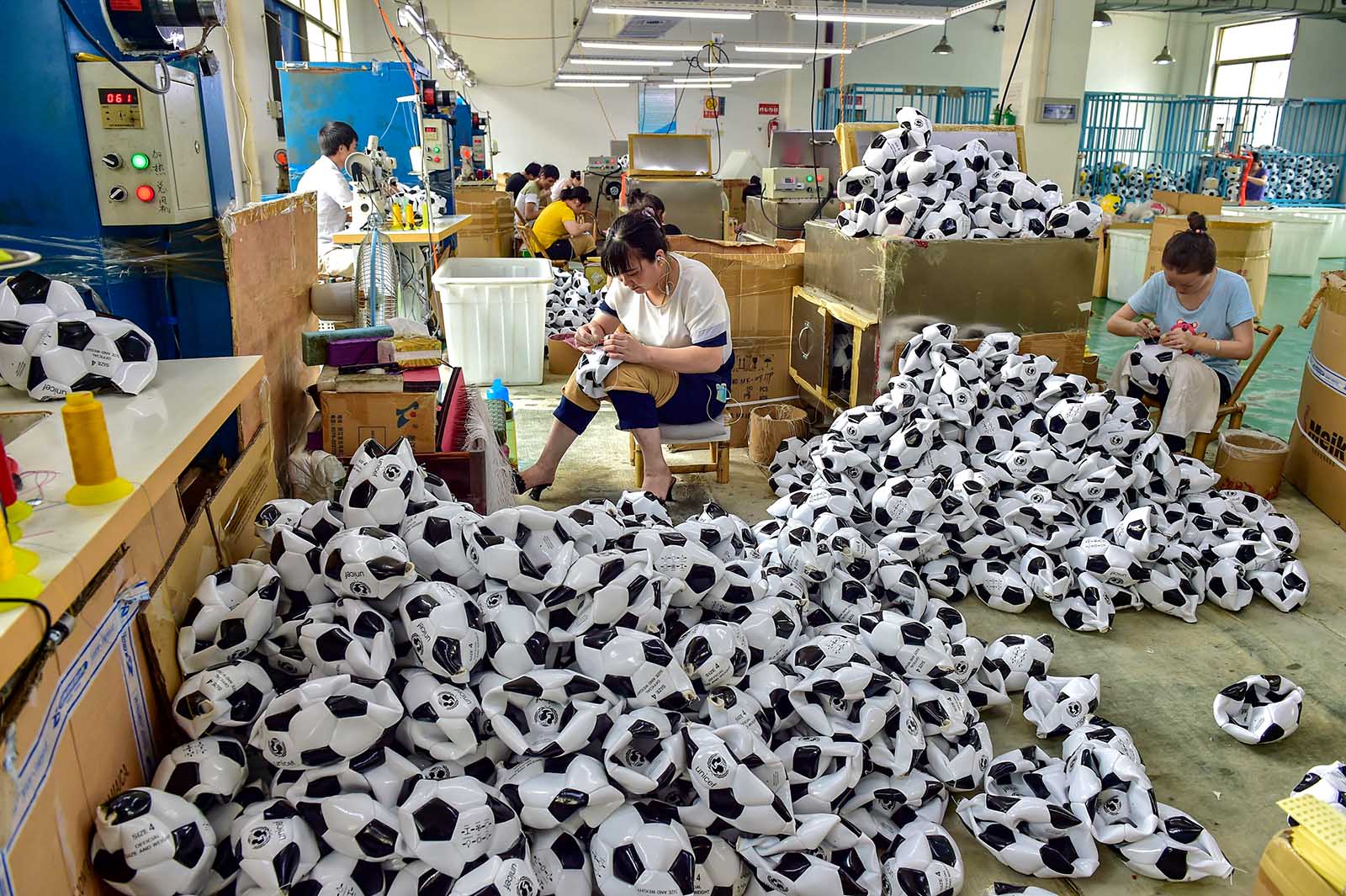Sound Inventory Management Crucial for Asian Companies

Workers in China make inflatable balls overtime to process additional orders from Russian, Brazilian and other overseas customers. China recorded lower working capital requirement in 2017 due to a decrease in inventories.
Photo: VCG
Effective working capital requirement (WCR) management is critical for companies to ensure long-term, sustainable profitability. It is a matter of survival: A lack of liquid resources to meet daily operations could lead to bankruptcy.
But what exactly is WCR? The WCR of a company is a financial metric whose components are accounts receivable (also known as days sales outstanding), inventory (also known as days inventory outstanding) and accounts payable (also known as days payable outstanding). It indicates the amount of financial resources needed by a company to ensure its production cycle and its repayments of both debts and upcoming operational expenses to continue smoothly.
Why Is WCR Important?
In 2017, China and Singapore recorded lower WCR due to a decrease in inventories, while markets such as Japan and South Korea registered a rise in WCR because of an increase in inventories.
A rise in WCR comes either from higher accounts receivable, higher inventory or from lower accounts payable, with changes in inventory usually resulting from variations in inventory value or variation in supply-chain management. Conversely, a drop in WCR comes either from lower accounts receivable, lower inventory or from higher accounts payable.
A rise in WCR also means fewer financial resources are available for other objectives, such as new product development, geographical expansion, acquisitions, modernization or debt reduction. This indicator is critical in the current environment, where debt is elevated and financing conditions are tightening, as it calls for more efficient use of working capital.
In the latest edition of the Euler Hermes Payment Behavior series, we provide an in-depth analysis of global working capital requirement evolution. The following outlines the main takeaways from our study.
The Global View: WCR at 69 Days
Based on our sample of 25,000 listed companies across 20 sectors and 36 countries, companies’ WCR leveled off at 69 days globally due to sound inventory management. This stability in global WCR stems from relaxation in delays of payment to suppliers and from sounder inventory management: Days payable outstanding increased by one day on average in 2017, while days inventory outstanding dropped by one day over the same period.
The Local View: Only China and Singapore Recorded a Decrease in WCR
In Asia, the WCR has remained stable at 75 days for two consecutive years. This compares to a decrease in a majority of countries in Eastern Europe, Africa/Middle East and Latin America and an increase in Western Europe and North America.
Yet, there are two trends behind this stability: China (-10) and Singapore (-15) saw a sharp decrease in their WCR, while the financial metric moved upward in other Asian markets.
In China and Singapore, a sharp decline in inventories led to the decrease of WCR. In China, lower WCR (86 days) is welcome news after the high level (96 days) seen in 2016. The decrease was driven by the construction (-30), machinery (-32) and energy (-21) sectors. Stock reduction is the result of authorities’ efforts to cut excess capacity. In Singapore, the fall in inventories could be attributed to a better optimization of stock rotation, resulting in a fall in WCR to 68 days. Two sectors led the trend in Singapore, namely pharmaceuticals (-56) and the aircraft sector (-45).
Outside these two markets, working capital needs have generally increased across Asia, led by a rise in inventories. Japan, for instance, saw its WCR rising by eight days to 80 days, driven by a rise in inventories (+7 days). In South Korea, meanwhile, WCR rose by four days due to a six-day rise in inventories. It saw its WCR climb in sectors such as automotive (+19), construction (+18) and aeronautics (+24). Likewise, Japan saw a rise in WCR for sectors such as construction (+32), agrifood (+20) and pharmaceuticals (+17).
In these markets, solid growth in global demand was likely the main driver for inventory increase, as production lines always require sufficient feedstock supply to churn out finished goods, and sales teams need enough stocks to meet the rise in demand and to avoid missed sales.
Sound Inventory Management Will Be Critical
The year 2018 began with three shocks for Asian corporates. These were: a significant rise in oil prices; a tightening of external financing conditions (led by the U.S. Fed) and also domestic financing conditions (led by local central banks); and an increase in protectionist measures in the U.S. While we expect the oil price to remain broadly stable until the end of 2018, the tightening of financing conditions is set to continue, and the risk of new protectionist measures from the U.S. will remain an issue.
In this environment, Asian companies are particularly vulnerable to these shocks due to their strong involvement in global supply chains. With a sharp decrease in WCR, Singapore and China entered 2018 on a stronger footing due to stock optimization and proactive macro-policies to cut overcapacity.
For markets that have faced a rise in WCR, remaining prudent will be key. First, tighter financing conditions in a context of high leverage could put a strain on corporates’ ability to pay. Second, a rise in trade-related risks could hinder sales and let corporates have a significant backlog of unsold goods. In this scenario, cautious inventory management will be pivotal for continued growth.






